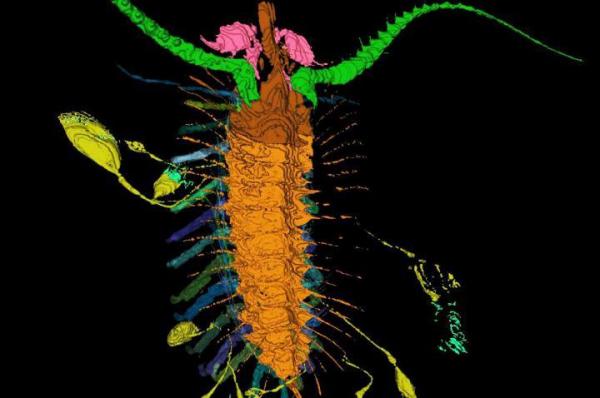
NEW HAVEN, Conn., April 4 (UPI) — Researchers at Yale University have discovered an ancient arthropod species with a unique parenting strategy. Aquilonifer spinosus carried its young in miniature pouches tethered to its body.
Scientists dubbed the tiny creature the “Kite Runner” — a nod to its sailing offspring and the best-selling novel of the same name.
“We have named it after the novel by Khalid Hosseini due to the fancied resemblance of the juveniles to kites,” researcher Derek Briggs, curator of invertebrate paleontology at the Yale Peabody Museum of Natural History, said in a news release.
“As the parent moved around, the juveniles would have looked like decorations or kites attached to it. It shows that arthropods evolved a variety of brooding strategies beyond those around today — perhaps this strategy was less successful and became extinct.”
The Kite Runner lived roughly 430 million years ago, and grew to roughly half an inch in length. It lived along the sea floor during the Silurian period alongside sponges, worms, snails, shrimp and other mollusks.
Scientists know relatively little about the species. There is only one fossilized specimen, the one described this week in the latest PNAS journal. It was found in Herefordshire, England.
The fossil includes 10 little Kite Runners, all tied to their mother by thin, flexible threads and in various stages of development.
“Modern crustaceans employ a variety of strategies to protect their eggs and embryos from predators — attaching them to the limbs, holding them under the carapace, or enclosing them within a special pouch until they are old enough to be released — but this example is unique,” Briggs explained.
“Nothing is known today that attaches the young by threads to its upper surface.”






